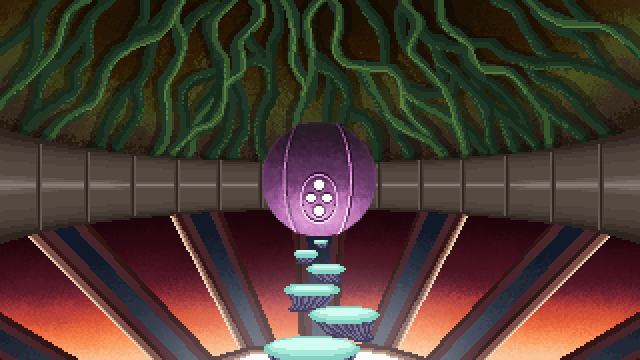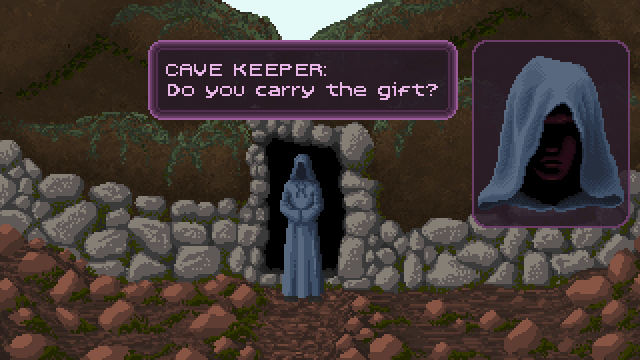So this grew from the thread about my current game-in-production and it made more sense to start a new conversation here.
What is your process for designing puzzles? Here's mine (which I'm looking to refine)
Designing puzzles is hard. Maybe that's why there's so little participation in the (shameless plug) Puzzle-Making Practice competition. My own process varies from game to game, so I'll stick to the current one.
The first question I ask is: What kind of game am I trying to make? Classic third-person P&C? First person? Visual novel? Even platformer? In the early stages of design, it may not always be clear what subgenre is the best fit for your project. And if you're not sure, puzzle design will feel extremely haphazard. (This won't necessarily change later. ) But the kind of game you make narrows the kind of puzzles that can be put in the game (or does it? Can you, for example, solve a murder in a platformer? I'd love to try).
) But the kind of game you make narrows the kind of puzzles that can be put in the game (or does it? Can you, for example, solve a murder in a platformer? I'd love to try).
A second part of this is who are you designing for? Experienced adventurers, beginners, or a wider audience? How difficult do you want the game to be? Do you care more about story or obstacles, or both equally?
Once you have a subgenre (or two, or three...) and a target audience, then what?
What I do is:
1. Start with story. What is the player/protagonist trying to achieve, story-wise? It doesn't need to be complicated. It could be simply "Get to the other end of the dungeon," and that's the entire game, room after room. It could be "Solve a murder." It could be "Become president." Here's what's important: the overarching goal will help determine the obstacles.
2. Where does the game take place? Setting has a huge effect on puzzles. Solving a murder in the wilderness is going to feel different from solving one in the city, and different from solving one on a spaceship. Get a good feel for your setting and the places for obstacles will become clearer.
3. Push-and-pull between puzzle and setting. This is where it helps to be flexible. Once you have a goal and a setting you can both refine the setting around the puzzles and also refine the puzzles around the setting. Play with them like clay until they fit together--add rooms, delete rooms, change what type of obstacle is in a room. But...
4. Do the obstacles make sense? Why is that key under the sink? Who hid it there and why? Or what about that bookshelf in the basement? Would the homeowner really want to go down all those stairs to get at it? If you don't know the ins and outs of everything, the player won't be satisfied with either the setup or the solution.
5. Is the puzzle solution too clear or too obscure? This is where I struggle. And where test players come in. As @CaptainD suggested in the other thread, it's really hard to gauge difficulty when you're the one making the puzzle. How do you give clues without giving the whole thing away? How do you know when not to give clues and trust that the player already has enough information?
I'm really interested in how others design puzzles in your own games. Do you have a set of principes you follow? A process of steps like (or unlike) the one I listed above? How do you figure out difficulty, clues, and teaching the player the tools without too much hand-holding? How do you make sure the puzzles make sense within the world?
I'm not so much interested in what to avoid (although that's important) but more so in what you gravitate toward. How do you do it? Are there reasons you do it that way?
Thanks in advance for any answers!
What is your process for designing puzzles? Here's mine (which I'm looking to refine)
Designing puzzles is hard. Maybe that's why there's so little participation in the (shameless plug) Puzzle-Making Practice competition. My own process varies from game to game, so I'll stick to the current one.
The first question I ask is: What kind of game am I trying to make? Classic third-person P&C? First person? Visual novel? Even platformer? In the early stages of design, it may not always be clear what subgenre is the best fit for your project. And if you're not sure, puzzle design will feel extremely haphazard. (This won't necessarily change later.
 ) But the kind of game you make narrows the kind of puzzles that can be put in the game (or does it? Can you, for example, solve a murder in a platformer? I'd love to try).
) But the kind of game you make narrows the kind of puzzles that can be put in the game (or does it? Can you, for example, solve a murder in a platformer? I'd love to try).A second part of this is who are you designing for? Experienced adventurers, beginners, or a wider audience? How difficult do you want the game to be? Do you care more about story or obstacles, or both equally?
Once you have a subgenre (or two, or three...) and a target audience, then what?
What I do is:
1. Start with story. What is the player/protagonist trying to achieve, story-wise? It doesn't need to be complicated. It could be simply "Get to the other end of the dungeon," and that's the entire game, room after room. It could be "Solve a murder." It could be "Become president." Here's what's important: the overarching goal will help determine the obstacles.
2. Where does the game take place? Setting has a huge effect on puzzles. Solving a murder in the wilderness is going to feel different from solving one in the city, and different from solving one on a spaceship. Get a good feel for your setting and the places for obstacles will become clearer.
3. Push-and-pull between puzzle and setting. This is where it helps to be flexible. Once you have a goal and a setting you can both refine the setting around the puzzles and also refine the puzzles around the setting. Play with them like clay until they fit together--add rooms, delete rooms, change what type of obstacle is in a room. But...
4. Do the obstacles make sense? Why is that key under the sink? Who hid it there and why? Or what about that bookshelf in the basement? Would the homeowner really want to go down all those stairs to get at it? If you don't know the ins and outs of everything, the player won't be satisfied with either the setup or the solution.
5. Is the puzzle solution too clear or too obscure? This is where I struggle. And where test players come in. As @CaptainD suggested in the other thread, it's really hard to gauge difficulty when you're the one making the puzzle. How do you give clues without giving the whole thing away? How do you know when not to give clues and trust that the player already has enough information?
I'm really interested in how others design puzzles in your own games. Do you have a set of principes you follow? A process of steps like (or unlike) the one I listed above? How do you figure out difficulty, clues, and teaching the player the tools without too much hand-holding? How do you make sure the puzzles make sense within the world?
I'm not so much interested in what to avoid (although that's important) but more so in what you gravitate toward. How do you do it? Are there reasons you do it that way?
Thanks in advance for any answers!











